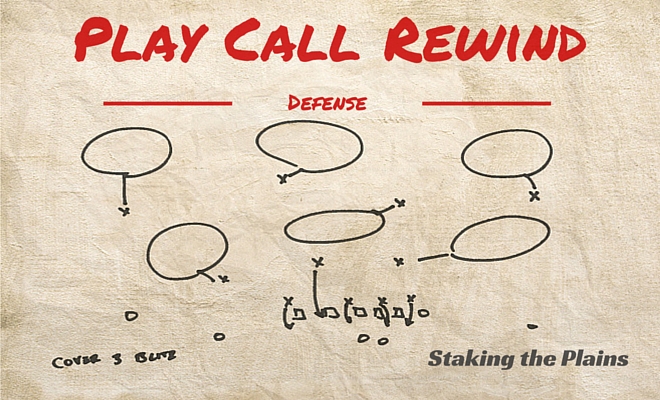To start with this play, we need to actually look at what the offense was running, however, because how quickly this play was blown up and stopped in the backfield, I can only guess based on what the UTEP offensive line was doing.
I’m confident what UTEP called was a version of their “Power O” play to the left, which I realize may mean absolutely nothing to you. Chris Brown over at Grantland wrote this FANTASTIC ARTICLE on the “Power O” and “Counter” run plays, how they work and why. Brown is much smarter than I am and is much more analytical.
While many think the term “power football” describes an attitude or perhaps even a formation, coaches actually use it to refer to something more technical: the Power-O and Counter Trey1 run plays, which most coaches simply call Power and Counter, and which are foundational running plays in the NFL and college football.
Power and Counter are so effective because their very designs are forged from aggression. They’re deliberate melees built on double-team blocks, kick-out blocks, lead blocks, and down blocks, and preferably finished off by a running back who drops his shoulder and levels a defender or two before going down.
TL;DR version: the backside guard (or multiple linemen) pull to lead block from a power running formation for the running back. It’s bread and butter for running teams, especially with big OL. Stanford runs this a bunch. Expect to see this from Arkansas this weekend.

As you can see, it can be a devastating big play with huge blockers opening gaping running lanes. But the play has one weakness, which is what we’re going to discuss this week.
UTEP lined up in a power running formation, albeit not as hefty as Stanford’s above, and like I said, appears to have called “POWER O” to the left.
Texas Tech is lined up with nine defenders in the box. On this play, we’re going to solely focus on defensive tackle, Breiden Fehoko, who is the last DT towards the top of the screenshot, next to Pete Robertson who is standing.
At the snap, the offensive guard takes his step back to start pulling to his left, and this is where the brief moment of weakness appears. You see, the strength of this play is the pulling guard. The offense doesn’t need extra blockers to the backside of the play, so the play design calls for the guard to leave that side of the formation after the snap and get in front of the running back. However, this is also it’s only weakness. And it’s really only able to be exploited if you have a defensive tackle that reads the “Power O” call immediately. When the guard pulls, the play design calls on the center and the tackle to pick up the defensive tackle the guard was lined up against. This leaves a hole that the defensive tackle can fire through if the play is read quickly enough. In the .gif above featuring Stanford, that hole is closed in an instant. With UTEP, it was open long enough for Fehoko to fire through, not allowing the OL to get a clean block on him.
Above, you can see the Center and the Right Tackle are turning in towards Fehoko as the guard steps back to pull to the left. Fehoko had a tremendous jump on the play, better than any of the other Tech defensive linemen.
This just isn’t any fair. Fehoko has the right tackle, center and fullback trying to slow him down and none of them get their hands on the big Hawai’ian. He’s just about at the QB before he even hands the ball off. You don’t really need me to remind you, but he is a true freshman.
And finally, he’s got Aaron Jones wrapped up an instant after receiving the handoff and drops him for a six-yard loss.
If Fehoko hadn’t gotten through the line so effectively, you have a pulling guard and a fullback leading the way for Jones around the end with only Tevin Madison sitting there on the edge. This very easily could have been a huge gain for UTEP. Without Fehoko’s excellent recognition and explosion, you can defend this play by having the linebackers flow and stretch the running back out to the sideline, not allowing him through a running lane or around the outside. You can expect Arkansas to run their fair share of the “Power O” to take advantage of their size and to maul their way on the ground.












